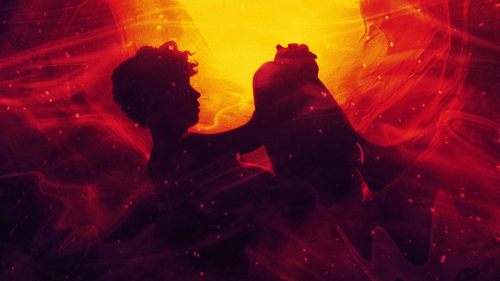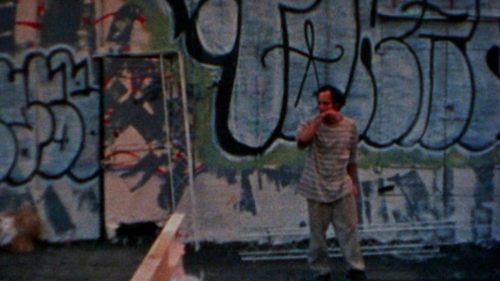WILD-ASS CINEMA WEEK: György Pálfi’s TAXIDERMIA
All week long, Birth.Movies.Death. is celebrating the arrival of the Safdie Bros.' Uncut Gems with a series of editorials about some of our favorite Wild-Ass movies. Some of these movies have direct connective tissue to the Safdies' previous films, some are completely unrelated except for their wildness, all are absolutely bonkers and, in our opinion, mandatory viewing. Welcome to Wild-Ass Cinema Week. Get your tickets to see Uncut Gems at the Alamo Drafthouse here.
You know you’re in for a good time at the movies when a major character shoots a plume of flames from his penis in the first ten minutes. For many movies, that kind of image would be the apex of their weirdness, something the film built up to, the image that appeared on no official posters but formed the entire basis of the eventual Mondo release. But for György Pálfi’s 2006 triptych Taxidermia, it’s only the beginning of a film that becomes increasingly bizarre throughout its entire runtime.
Spoilers follow, because it’s hard to talk about this movie without going into its endgame. If the header image and the above paragraph have sold you already, go watch the movie and come back.

Taxidermia is an epic family saga spanning generations - like The Godfather, only with less gun violence and more surreal body horror. It tells the tale of three generations of Hungarian men, starting in World War II, each defined by the things they do with their bodies. The first generation, military orderly Morosgoványi, escapes his wartime hell through sexual fantasy, which after a number of strange occurrences results in his commander’s wife bearing his son, who bears the curly tail of the pig whose corpse Morosgoványi found himself having sex with. You gotta roll with this - it makes poetic sense, rather than literal sense.
That son, Kálmán, grows up to become a professional speed-eater, training hard for the day competitive eating becomes an Olympic sport. Though a humiliating lockjaw incident temporarily halts his career, Kálmán starts a family and eventually returns to the food- and vomit-filled sport to which he previously dedicated his life. His wife bears a son, and it’s in the subsequent third act that the family folds in on itself and self-destructs.
Kálmán’s son Lajoska is a scrawny, pasty recluse, running a taxidermy business and caring for his dad, who has by now grown to a truly monstrous, immobile scale. Kálmán is a harsh father, constantly berating his son while feeding his cats butter and eating candy with the wrappers still on (because “it just gets absorbed”). The abuse in this relationship is palpable, the former speed-eating pro hammering on his son's shortcomings as the son slowly plots retribution.
Eventually Lajoska abandons his dad, leaving him with only a pile of candy bars, then later returns to find him disemboweled by his cats, having been unable to escape their hungry maws. Inspired, Lajoska extracts his father’s remaining innards and mounts his body as a piece of taxidermy. He then proceeds to mount himself in a similar fashion, removing his own organs surgically and stuffing himself before setting off a machine to slice off his head and arm. The aim of which is to create an art installation - his life's work.
It’s certainly a lot.

It should be clear by now that Taxidermia supplies heaping quantities of imagery that are difficult to forget. Depending on your constitution, that’ll be either a good or bad thing. Each of the film’s three chapters inspires profound body horror, despite the film broadly playing like a surrealist comedy. Between the carcass sex, the copious vomiting, and the self-surgery, it’d be hard to find anyone who wouldn’t squirm at least a little bit. It is, however, also hilarious, full of mundane observations and little character idiosyncrasies to match the large-scale oddness.
As with A Serbian Film and We Are The Flesh, Taxidermia is something of a metaphorical treatise on the history and politics of its country of origin. I don’t know enough about Hungary to comment on or even assign meaning to it, but it's certainly quite clear that a saga in which a father grows fat while his son toils skeletally, and in which that son carves out parts of himself in order to make a point, is making a point. There are a hundred different ways to read Taxidermia, few of them literal, and that makes any watch more enthralling.
It’s also important to note - as with many films designated “wild” - that Taxidermia is not weird for weird’s sake. Many people emerge from films like this and dismiss them as such, but artists don’t spend years of their lives making work - especially work this unique - without it meaning something to them. There’s incredible passion in Taxidermia. There’d have to be. Even if you don’t take a political view of the film, its dysfunctional family story probably has something to connect with everyone. Maybe not the disemboweling.
Ultimately, you came to this article for a bucketful of crazy shit, and if you can track the movie down, Taxidermia will absolutely deliver. Best of all, it’s a meditative, artfully-shot, extremely European bucketful of crazy shit, full of commentary on history, family, and the self-destructive nature of art. It's whimsical, melancholy, and absolutely bonkers.



